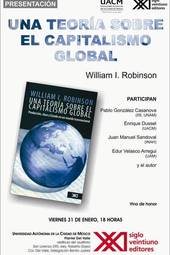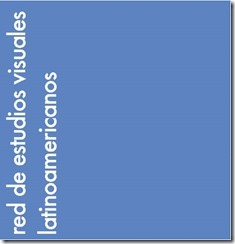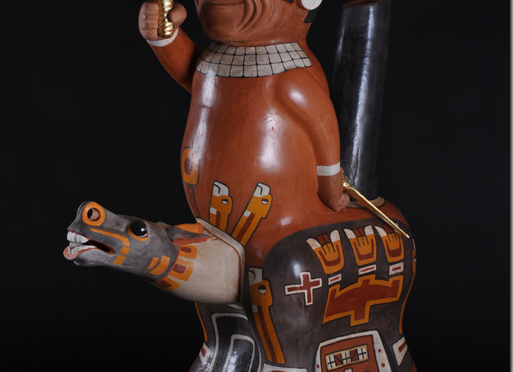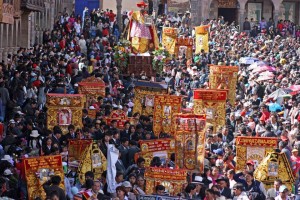
All posts by mzantsi
Encuentro Internacional de Estudios Visuales Latinoamericanos 2014
 III Encuentro Internacional de Estudios Visuales Latinoamericanos 25, 26 y 27 de junio de 2014 en la UAEH, Pachuca de Soto, Hidalgo, México
III Encuentro Internacional de Estudios Visuales Latinoamericanos 25, 26 y 27 de junio de 2014 en la UAEH, Pachuca de Soto, Hidalgo, México
El Tercer Encuentro Internacional de Estudios Visuales Latinoamericanos, tiene la finalidad de reunir especialistas internacionales en relación con el estudio de la imagen como instrumento fundamental para la construcción tanto de memorias colectivas como del acontecer histórico latinoamericano. En esta ocasión, el Encuentro centrará su atención en las metodologías del estudio de las imágenes y la cultura visual.
La propuesta de la Red va mucho más allá de la Historia Oficial, que ha utilizado la imagen y el registro visual para justificar políticas de exclusión o interpretaciones sesgadas e interesadas del transcurrir histórico. También va más allá de los métodos empleados por historiadores de carácter tradicional, que han considerado la imagen como un subproducto histórico, un objeto auxiliar que acompaña a la palabra o, en el mejor de los casos, la ilustra.
La Red sostiene que la imagen (y, en general, la cultura visual) desarrolla estructuras propias que conforman discursos que deben ser leídos en otras claves: rigurosas, actuales y tomando posición.
La imagen provoca procesos de intertextualidad que la historia y las ciencias sociales no han sabido o no han querido explorar, ni asumir. Hoy en día, es imposible acceder al estudio del pasado y del presente de una manera eficaz y verosímil si no tenemos en cuenta la imagen, instrumento que sobrepasa la noción limitada de documento que maneja el discurso escrito.
La imagen plantea sus propias condiciones (y contradicciones), y responde a preguntas que no están presentes en la ortodoxia de la tradición histórica. Además, en momentos en que la construcción y recuperación de las memorias sociales e individuales se ha convertido en un reto para la academia, las imágenes son un instrumento ineludible, una herramienta de comprensión quizás más cercana al individuo social y a los procesos de globalización en los que estamos inmersos.
El Tercer Encuentro Internacional de Estudios Visuales Latinoamericanos tendrá lugar en el marco del III Coloquio Internacional Imagen y Culturas que organizan el Cuerpo Académico de Estudios Históricos y Antropológicos y el Grupo de Investigación en Estudios Sociales y Culturales del Área Académica de Historia y Antropología de la Universidad Autónoma del Estado de Hidalgo.
Con el objetivo de estrechar relaciones académicas entre investigadores de América Latina, la Red de Estudios Visuales Latinoamericanos se suma a la convocatoria del III Coloquio Imagen y Culturas para, juntos, construir un espacio de intercambio académico interdisciplinario en torno al estudio de la imagen.
El Tercer Encuentro Internacional de Estudios Visuales Latinoamericanos se desarrollará en varias sesiones organizadas en mesas de acuerdo a las coincidencias temáticas y/o metodológicas de las ponencias seleccionadas.
Las propuestas deberán incluir los siguientes elementos: título, breve biografía académica del autor (máx. 500 palabras), datos de contacto (postal y electrónicos), resumen de la ponencia (máx. 600 palabras), y cinco palabras clave. Deberán ser enviadas antes del 28 de febrero a: redevlat@gmail.com
Las ponencias tratarán de los diversos temas que son propios de los Estudios Culturales y la Cultura Visual, con una cronología que va desde la Colonia hasta nuestros días, siempre dentro del marco geopolítico de América Latina. Se podrán abarcar todos los medios de expresión que conciernen a la imagen. El tiempo máximo de exposición será de veinte minutos.
The truth about the resignation of Benedict XVI
 One wonders if Esteban Bedoya has some secret hot-line into the Vatican. When he published The Apocalypse According to Benedict in 2008 it seemed an audacious fantasy that Pope Benedict XVI, AKA. Joseph Ratzinger, would ever retire from this highest of worldly offices. Popes don’t retire: they assume the Papal throne at an advanced age and moulder away on the job. One need only think of Benedict’s predecessor, Pope John Paul II, who died at the age of 85, suffering from Parkinson’s Disease and severe degenerative arthritis. By the end of his life John Paul II had survived two assassination attempts and several cancer scares, but his decrepitude was alarming.
One wonders if Esteban Bedoya has some secret hot-line into the Vatican. When he published The Apocalypse According to Benedict in 2008 it seemed an audacious fantasy that Pope Benedict XVI, AKA. Joseph Ratzinger, would ever retire from this highest of worldly offices. Popes don’t retire: they assume the Papal throne at an advanced age and moulder away on the job. One need only think of Benedict’s predecessor, Pope John Paul II, who died at the age of 85, suffering from Parkinson’s Disease and severe degenerative arthritis. By the end of his life John Paul II had survived two assassination attempts and several cancer scares, but his decrepitude was alarming.
In his novella Bedoya has Benedict retire – and so it came to pass. On 11 February 2013, two months’ short of his 86th birthday, the Pope announced his intention to step down, citing “a lack of strength of mind and body”.
Having witnessed the lamentable final years of his friend and ally, John Paul II, one can understand Benedict’s actions, even if had been 598 years since the previous Papal resignation. That was when Gregory XII was forced to resign in order to end the Great Schism which divided the Catholic Church from 1378 to 1418.
The novelty of Bedoya’s story is that the Pope does not resign solely because of declining health. His decision follows a landmark decision that throws the Church into crisis. Those who considered the Pontiff to be an ultra-conservative, now call him “Benedict the Revolutionary”.
Having detonated his bomb the Pope declines the offer of spending his retirement in the Vatican and withdraws to his native Bavaria. The real Benedict has remained in Rome, but with the caveat that his only ‘revolutionary’ gesture was the resignation itself.
The startling parallels between art and life lend a seductive power to Bedoya’s imaginative rewiring of reality. Is it impossible that the real Benedict might have felt the same anxieties about the “crisis of faith” faced by the Church today? The crisis is real enough with the Catholic Church often resembling a vast multinational corporation peddling a medieval view of personal morality. Believers around the world find their faith tested by doctrines seemingly at odds with the circumstances of their lives.
Bedoya’s Pope takes decisive action then resigns while the shock waves are still radiating outwards. He knows there can be no stopping the forces he has unleashed. For the reader this extraordinary scenario has a eerie plausibility. One can believe the real Benedict nurtured similar ambitions which never came to fruition. The author leads us into this state of heightened credulity by presenting the Pope as a creature of flesh-and-blood who talks freely about his childhood temptations, feeling the conflict between his vows to the Church and the pangs of sexual desire.
For the Church the Pope is an immaculate figure whose life and actions can only be exemplary. Bedoya’s version seems much more like a mere mortal – more capable of eliciting our sympathies, less demanding of reverence.
And so we read The Apocalypse According to Benedict as both an outlandish work of fiction and a tale that brings a touch of earthy realism into our views of that otherworldly kingdom, the Vatican. The book dispels the air of professional mystery concocted by the Church and leads us to focus on those greater mysteries contained within the human heart.
Review by John McDonand
Ping Pong: Colombia – Australia Cultural Connections through Visual Arts
Ping Pong: Colombia – Australia Cultural Connections through Visual Arts
7-30 November at RMIT Design Hub
The Embassy of Colombia in Australia, Multicultural Arts Victoria (MAV), and RMIT University are proud to present Ping Pong, a pioneering international cross-cultural visual arts project where visual artists in Colombia partner up with artists in Australia, China and India.
This project is part of the Ministry of Foreign Affairs’ “Plan de Promoción de Colombia en el Exterior”, which promotes the country overseas through its cultural expressions.
The Ambassador of Colombia in Australia, Mrs. Clemencia Forero, looks forward to this project that will lead to a cultural exchange between Colombia and Asia Pacific countries: “Projects like Ping Pong strengthen cultural bonds and raise awareness on drawing, one of the most outstanding expressions of Colombia’s current artistic scenario. We are very proud of presenting this project in Melbourne.”
Exhibition 7-30 Nov
Opening: Thursday 7 of November at 11.00 am. Everyone welcome but RSVP is essential to events@rmit.edu.au
Exhibition dates: Thursday 7 November – Saturday 30 November
Venue: RMIT Design Hub (Bldg 100), Design Research Institute Long Room, Level 9, Corner Swanston & Victoria St
Conference Colombia – Australia: Cultural Connections in the 21st Century.
Everyone welcome but RSVP is essential to events@rmit.edu.au
Date: Friday 8 November
Time: 9:30-4:00pm
Venue:RMIT Design Hub Level 3 (Bldg 100), Lecture Theatre
Presented by the Ministry of Foreign Affairs of Colombia in partnership with RMIT University and Multicultural Arts Victoria. Supporters: Arts Victoria, City of Melbourne
Image: Jorge Julian Aristizabal, Bathos/Trivialidad 2013, image courtesy of the artist
Kukuli Velarde–the empire looks back

Kukuli Velarde, Patron Santiago (Corpus Series), red clay low fire, underglazes, casein, gold leaf and wax, 84 h x 49 d x 26.5 w cm, 2013
Kukuli Velarde is a Peruvian-born artist whose work deconstructs the Spanish colonisation of Andean peoples. Here she writes about the southern agenda behind her work:
Like the majority of Peruvians, I am the product of the forced combination of the european and the indigenous worlds, which ultimately can be seen also as the forced combination of two aesthetics. CORPUS is an attempt to explore and develop a body of work that visually narrates Peruvian history through physical syncretism, combining pre-Columbian and Colonial sensibilities within the objects created, in order to document our paradoxical idiosyncrasies. CORPUS is also a search for a truer Peruvian aesthetic than just the one taught by the victor. Once we are able to artistically represent what historically we have experienced, then can we successfully join in the larger community of nations and contribute to the wealth of international aesthetics… The European aesthetics, which is the international aesthetics today, was formed in the image and likeness of their creators, maybe it’s time to reflect and reconsider whether we, Peruvians, shouldn’t place ourselves at the center of our likes and dislikes, stopping being the dissonant ugly ones in the ‘movie’, the stone guests to a banquet to which we were not even invited.
Prior to the arrival of the Spanish, the city of Cusco had 350 Wakas, sacred places where representations of beneficial entities could be placed, linked to natural elements such as sun, water and corn. Colonisation involved the occupation of shrines, replacing many local gods with the one Jesus. The rite of Corpus has been held since 1572 when Viceroy Francisco Toledo received the order of the king of Spain to “fight” the Wakas of Cusco. This involves a procession of fifteen icons, representing religious figures such as Saint Sebastian and Santiago.
Velarde’s Corpus series reveals the indigenous figure harboured inside its official Christian mask. The pedestal is inspired in the actual platforms on which Santiago is carried in the Cusquenian Corpus. The form and designs of horse and man are drawn from Tiwanaku sculptures.
While exposing the hidden reality, the works also bring together the two worlds that house the mixed identity of someone like Velarde – ‘I am the product of the forced combination of the European and the indigenous worlds.’ Velarde’s work does not fit neatly into the essentialism of indigenismo, which seeks to de-colonise the Andean region, stripping away the traces of European colonisers. It is rather a carnivalesque play of cultures otherwise ordered hierarchically in order of whiteness. See her website for more examples of this prolific artist.
Epistemologies of the South: South-South, South-North and North-South global learning
From the multilingual Boaventura de Sousa Santos comes news of an important upcoming event in southern thinking:
Call for papers
Epistemologies of the South: South-South, South-North and North-South global learning
Coimbra – 10, 11, 12 July 2014
A sense of exhaustion looms over Europe. It would appear that the old world is no longer capable of rethinking its past and future.
This colloquium challenges participants to consider that an understanding of the world is much broader than a Western understanding and that therefore the possibilities for social emancipation may be different from those legitimised by the Western canon. This is the essential challenge: we do not need alternatives, but an alternative way of thinking about alternatives.
Can the anti-imperialist South teach anything to the global North? Can the global North teach anything that is not defined by centuries of colonialism and neo-colonialism, imperialism and ethno-racial supremacy? Can both learn in such a way that one day there will be no South or North?
The answers to these questions will enable proposals for theory and action to be constructed which effectively confront the logic of global exploitation, oppression and exclusion
The colloquium is structured around the following four main themes,involving the participation of scholars and activists in the global North and South:
- Democratising democracy
- Transformative constitutionalism, interculturality and the reform of the state
- Other economies
- Human rights and other grammars of human dignity
Full version of the call for papers here
To submit a proposal, please follow this link
Also in Portuguese:
and Spanish:
Decolonial Aesthetics out in Social Text

Decolonial AestheSis
Walter Mignolo’s application of decolonial theory to art practice is discussed in a number of papers for the latest edition of Social Text.
“Decolonial aestheSis asks why Western aesthetic categories like ‘beauty’ or ‘representation’ have come to dominate all discussion of art and its value, and how those categories organise the way we think of ourselves and others: as white or black, high or low, strong or weak, good or evil. And decolonial art (or literature, architecture, and so on) enacts these critiques, using techniques like juxtaposition, parody, or simple disobedience to the rules of art and polite society, to expose the contradictions of coloniality. Its goal, then, is not to produce feelings of beauty or sublimity, but ones of sadness, indignation, repentance, hope, and determination to change things in the future.”
Materialidades (Pos)coloniales y de la (de)colonialidad Latinoamericana
II Coloquio del Centro de Investigaciones y Estudios en Teoría PoscolONIAL
Facultad de Humanidades y Artes
Universidad Nacional de Rosario, Argentina
18, 19 y 20 de noviembre de 2013
El Centro de Investigaciones y Estudios en Teoría Poscolonial convoca al envío de resúmenes para su II Coloquio,Materialidades (Pos)coloniales y de la (de)colonialidad latinoamericana. Los mismos deberán abordar algún aspecto de la materialidad colonial, poscolonial o de la (de)colonialidad en América Latina, desde cualquier disciplina de las humanidades o ciencias sociales.
Nos interesan especialmente aquellos trabajos que puedan mostrar el impacto de la cultura material en la articulación de perspectivas críticas tanto sobre situaciones coloniales como poscoloniales y decoloniales, y también aquellos trabajos que indaguen en las tensiones que emergen al yuxtaponer representación/discurso y materialidad en situaciones (pos)coloniales y (de)coloniales en nuestra región.
Proponemos reflexionar sobre las siguientes preguntas: ¿Qué es lo que se entiende por cultura material en nuestras respectivas disciplinas y abordajes? ¿Cómo es que la cultura material en cualquiera de sus formas, interpela, atraviesa y tensiona los discursos crítico teóricos-sobre el colonialismo y la colonialidad en América Latina? ¿Qué perspectivas crítico-teóricas emergen del diálogo entre abordajes filosóficos y de análisis de discurso con aquellas disciplinas marcadas por la materialidad de sus objetos de estudio?
Para más información Enviar resúmenes a cietp_unr@ hotmail.com
Nicholas Mangan–recreate the past for the future
Nicholas Mangan is a Melbourne artist with a strong interest in the material histories of the Pacific. His previous show at Sutton Gallery Nauru, Notes from a Cretaceous World concerned the history of phosphate mining in the remote Pacific island, which had become a processing centre for asylum seekers (see article). His recent show, Progress in Action, concerns struggle in 1988 by the Bougainville Revolutionary Army to close the Panguna Copper mine which was polluting their island.
Mangan’s strategy is to re-stage the BRA’s attempts to cope with the blockage of food and energy by developing new modes of self-sufficiency. Locals took to the ubiquitous coconut as a resource to sustain their existence (as told in the film Coconut Revolution). Mangan learned how to extract oil from the coconut which could then be refined as a fuel to power a generator. This energy was then used to project a film documentary montage from the time. Alongside the installation and performance were copper plates, reproducing publications such as the Bougainville Copper annual report.Mangan’s work follows that of others who seek to re-enact past struggles, such as Tom Nicholson. What’s particularly interesting here is the contemporary relevance of the energy system that he re-creates, showing the way in which the necessity of deprivation can lead to the invention of renewable energies. As Mangan says,
Beyond the politics or history for me it always comes back to the core materials that are formed or sculpted by an ideological determination, like copper being used for capitalist extraction or the coconuts being used as the agency for an eco-revolution.
In Australia, this has particular meaning as a challenge to the way neighbouring Melanesian region can be dismissed as an ‘arc of instability’. It ranks alongside the television series Straits as a way of imaginatively connecting the continent to the oceanic web in which it is embedded.
Mangan’s work also opens up a particularly southern strategy for art making, in revealing the means of production. Exposing the supply chain works against the commodification of art by revealing the process that lies behind the product. It sociology it demonstrates the kind of creative potential in the ecological knowledge outlined by Boaventura de Sousa Santos.
Of course, it could go further. The exhibition itself is lacking a relational dimension. There is no active role played by people in Bougainville today. If only Mangan had the opportunity to visit Bougainville himself, and find ways in which they might like to become actively involved in his work.
Fortunately, the project is far from over. Mangan is in the process of shipping the installation to Brazil, where it will feature in the Mercosul Biennial at Porto Alegre. According to the curatorial statement, the biennial
gathers works together that explore different kinds of atmospheric disturbances propelling travel and social displacement, technological advancement and world development, vertical expansions in space, and transversal explorations through time.
This seems a perfect fit for Mangan and an important opportunity to have an Australian artist represented in this key South American event.









.jpg)